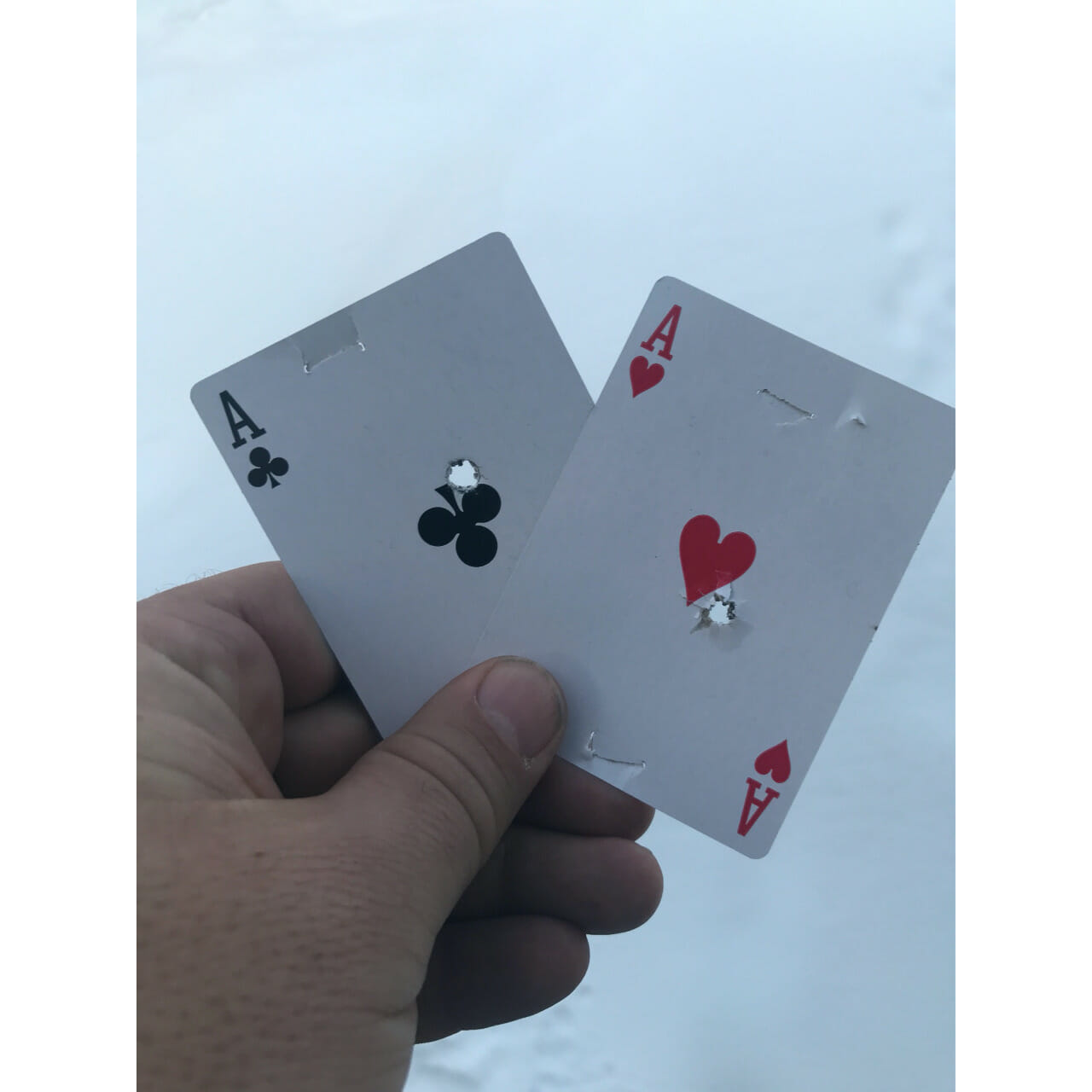My son, Paul, and I are elk and deer hunters. A few years back, we had the good fortune of meeting up at the rifle range with our friend Matthew (last name anonymous because he’s working a high-level security detail now) who is a former SAS sniper. He spent two days coaching us on the details of precision shooting. We went over everything from breath control, to the delicate process of properly squeezing a trigger, and much more.
But the most important lesson he imparted was that you have to “aim small and miss small.” He took away our big targets, and cracked open a deck of cards. He then walked downrange (the range was clear!) 200 yards and taped all four aces on the backstop.
“The important thing is that you get in your minds that you must make those shots count, and zero in on the smallest scale you can,” he said. “If you have a tiny margin of error in your mind, before you take the shot, even if the shot isn’t perfectly center, you are still in business.”
I’ve since applied that thinking to fly casting.
Most of us were taught that the key to fishing success is “covering water,” whether you’re tossing a size 14 parachute Adams or a Mepp’s spinner. Cover the water, and something good might happen.
That said, when you have a real feeling that a trout just might be lurking in a spot, whether you see the fish feeding on the surface or not, you should start thinking about the “perfect landing spot.”
The whole point is that it helps to slow down, survey the situation, find a target zone, and then shrink it down to the size of a playing card. Put that one cast on the card. Miss an inch left, fine. Miss an inch right, OK. You’re still in the game.
There’s that subtle seam, where the fast water meets the slow, behind the rock, or whatever. When all is said and done, the perfect landing spot for a fly might indeed be the size of a playing card. Even if you see a snout rising, you know the target is really no larger than the ace of spades.
The whole point is that it helps to slow down, survey the situation, find a target zone, and then shrink it down to the size of a playing card. Put that one cast on the card. Miss an inch left, fine. Miss an inch right, OK. You’re still in the game.
I’d trade 10 casts at a target the size of a dinner plate for one, well-thought, well-intended casts at a target the size of a playing card. Fewer, quality casts are always better than a dozen good ones.
Take that one to the house.
We post Trout Talk features every weekday. See them all here.



